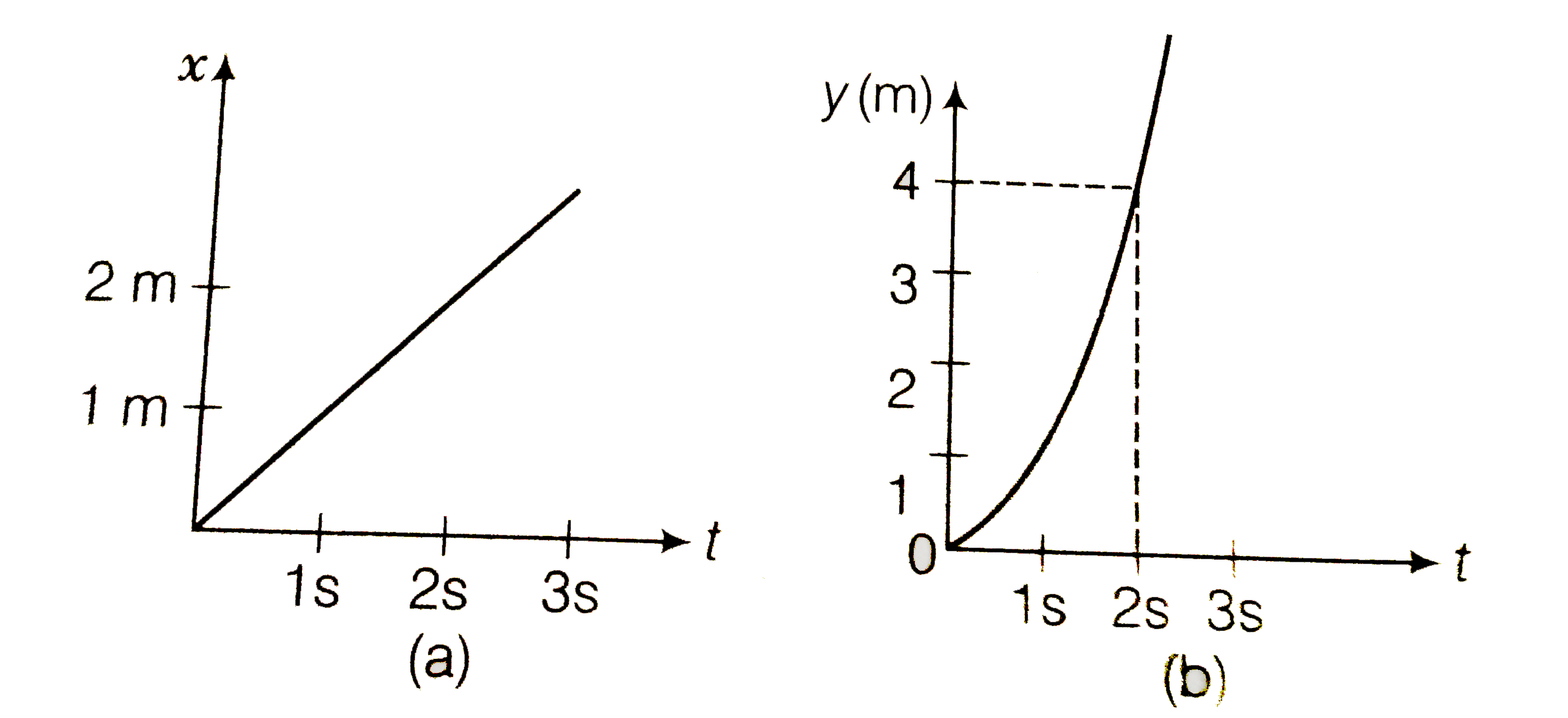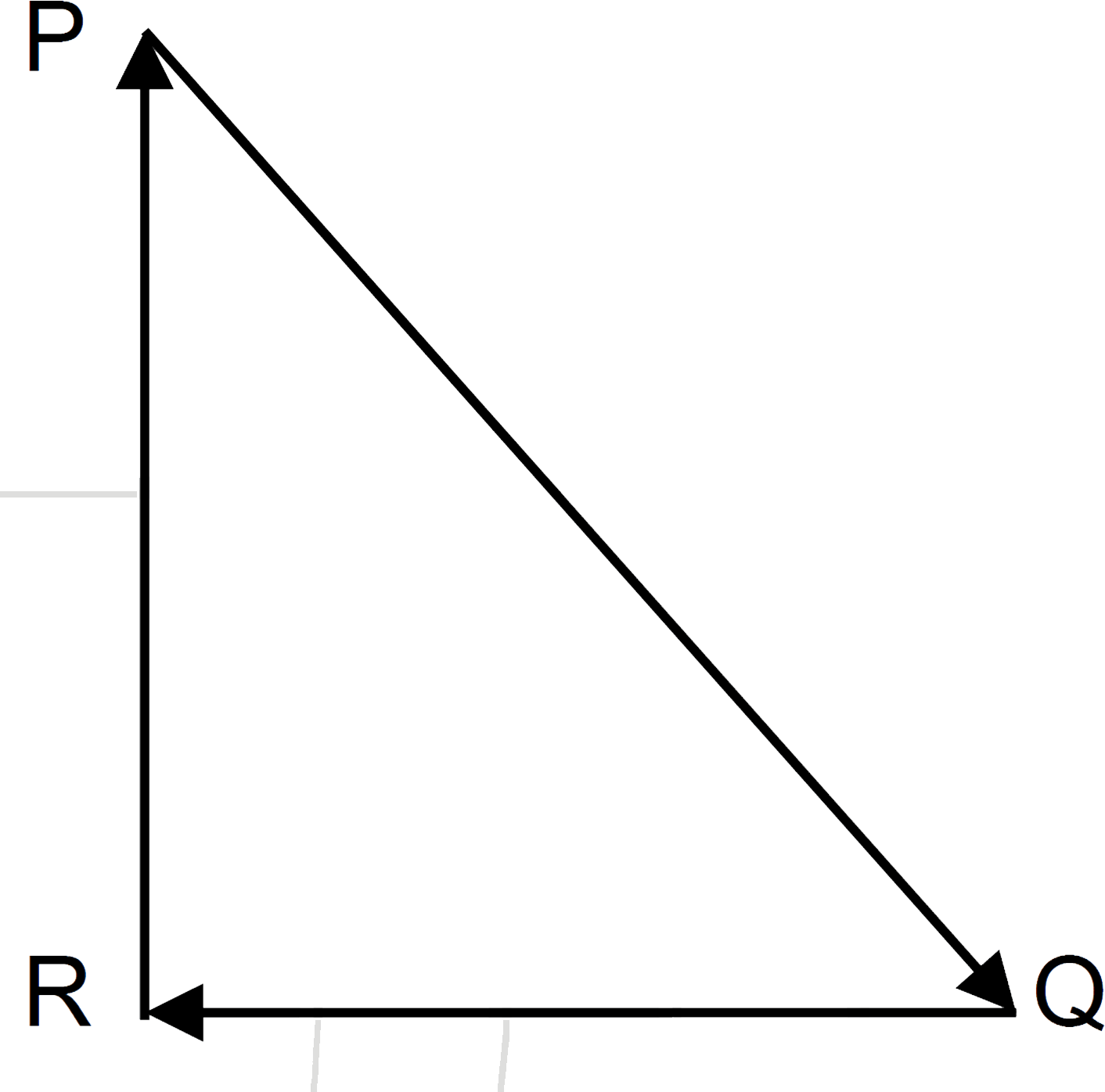The velocity of a particle moving in a plane is given by the following diagram. Find out the direction of force acting on the particle?

The velocity of the particle is →v=vxˆi+vyˆj+vzˆk . As shown in the figure, the particle is moving in the xy plane, there is no motion in the z direction. so velocity in the z direction is zero (vz=0) . The velocity of the particle has x component (vx) and y component (vy) . From figure, as time increases from t = 0 sec to t= 3 sec, the length of the vector in y direction is changing (increasing). It means y component of velocity (v.) is increasing with respect to time. According to Newton.s second law, if velocity changes with respect to time then there must be acceleration. In this case, the particle has acceleration in the y direction since the y component of velocity changes. So the particle experiences force in the y direction. The length of the vector in x direction does not change. It means that the particle has constant velocity in the x direction. So no force or zero net force acts in the x direction.
Topper's Solved these Questions
- BOOK - FULL MARKSCHAPTER - LAW OF MOTION EXERCISE - TEXTUAL QUESTIONS SOLVED (MULTIPLE CHOICE QUESTIONS)15videos
LAW OF MOTION
- BOOK - FULL MARKSCHAPTER - LAW OF MOTION EXERCISE - TEXTUAL QUESTIONS SOLVED (SHORT ANSWER QUESTIONS)21videos
LAW OF MOTION
- BOOK - FULL MARKSCHAPTER - KINETIC THEORY OF GASESEXERCISE - Addtional Numerical Problems10videos
KINETIC THEORY OF GASES
- BOOK - FULL MARKSCHAPTER - MOTION OF SYSTEM OF PARTICLES AND RIGID BODIESEXERCISE - ADDITIONAL QUESTIONS SOLVED - III (LONG ANSWER QUESTIONS (5 MARKS))6videos
MOTION OF SYSTEM OF PARTICLES AND RIGID BODIES
Similar Questions
Figure shows (x,t) (y,t) diagram of a particle moving in 2-dimensions.

If the particle has a mass of 500 g , find the force (direction and magnitude) acting on the particle .View SolutionThe velocity of a particle of mass 2 kg is given by →v=atˆi+bt2ˆj. Find the force acting on the particle.
View Solution
Knowledge Check
- Question 1 - Select One
Figure shows (x,t) (y,t) diagram of a particle moving in 2-dimensions.

If the particle has a mass of 500 g , find the force (direction and magnitude) acting on the particle .A1N along y-axisB1N along x-axisC0.5N along x-axisD0.5N along y-axis - Question 2 - Select One
A particle moves in a plane with a constant acceleration in a direction different from the initial velocity. The path of the particle is
Astraight lineBarc of circleCparabolaDellipse - Question 3 - Select One
A charged is moving with constant velocity parallel to a horizontal current carrying long wire. The direction of velocity of that particle and the current are same. If the force acting on the particle are only magnetic force due to wire and gravitational force due to earth, then the particle :
Amust be positively chargedBmust be negatively chargedCmay be positively chargedDmay be neutral
Figure shows (x,t) (y,t) diagram of a particle moving in 2-dimensions.

If the particle has a mass of 500 g , find the force (direction and magnitude) acting on the particle .View SolutionFigure shows (x,t) (y,t) diagram of a particle moving in 2-dimensions.

If the particle has a mass of 500 g , find the force (direction and magnitude) acting on the particle .View SolutionA charged is moving with constant velocity parallel to a horizontal current carrying long wire. The direction of velocity of that particle and the current are same. If the force acting on the particle are only magnetic force due to wire and gravitational force due to earth, then the particle :
View SolutionA particle moving with velocity →V is acted by the three forces shown by the vector triangle PQR. The velocity of the particle will :
 View Solution
View SolutionA particle moving with velocity →V is acted by the three forces shown by the vector triangle PQR. The velocity of the particle will :
 View Solution
View Solution

